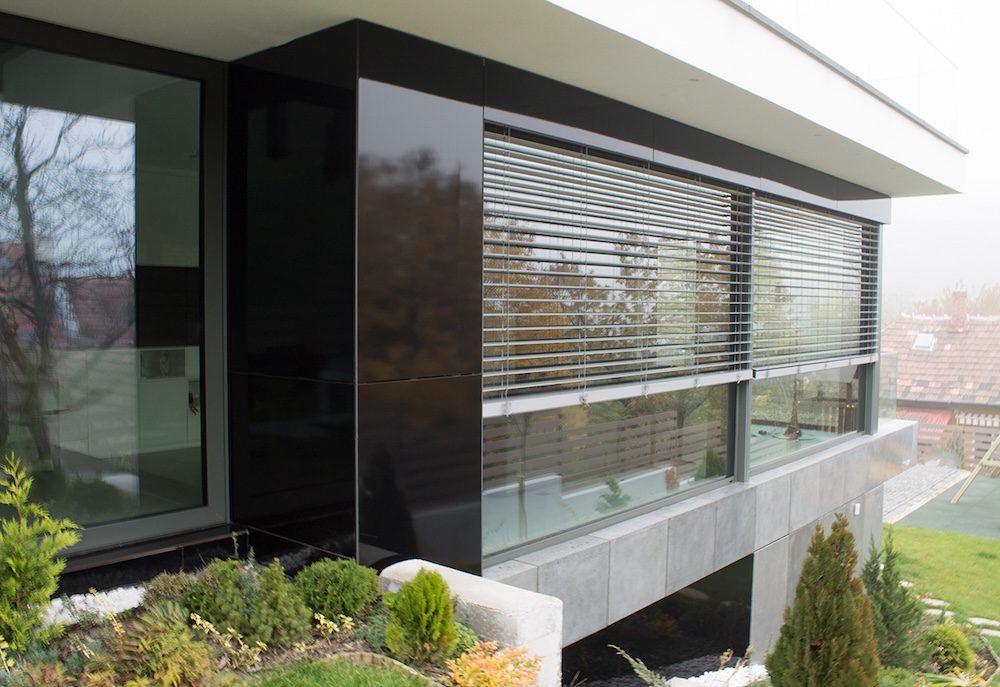The evolution of blinds

Climate change and increasingly sophisticated customer demands have accelerated the evolution of shading systems, not just of windows and doors. While in the past the goal was complete darkening, nowadays light control and maximum transparency are the main considerations. Thanks to this, most client choose lamellar and textile shadings.
There are two main directions of change in shading systems. One of them is the increase in size as a result of the development of windows and doors. In response to customer demand, manufacturers have begun to manufacture windows and doors of a larger size, but this change in size has only now been able to be followed by shading products, not only in their size but also in their operation and wind resistance. At the same time it may be observed that people’s attitudes towards shading have changed. Nowadays they do not like to associate shading with darkening – although this was a basic feature in the past, alongside the idea of “if we shade, it should be dark indoors” – they would rather control the amount of light. The product development lines are formed by a mixture of these two directions, thanks to which, instead of the earlier roller blind and shutter solutions, movable lamellar and textile shading are gaining a majority.
Although the use of textile shadings has fallen back slightly in the past, these solutions are now gaining popularity again. The fact that manufacturers are developing more product lines also gives momentum to this. In addition to actuating structures, mechanisms, the low collector height (collector size), and tensioning modes, they are also experimenting with the type of textiles. This demonstrates the growing interest of manufacturers in providing maximum transparency, in addition to protection against the sun, looking from the inside out. Namely, these materials are capable of displaying a completely dark state from the outside by keeping down the power of the sun, but from the inside it is possible to see the outside. This constitutes one of the main differences between the two types: when looking out through lamellar products, we always see a horizontal-line method, while for textiles we see a completely homogeneous surface in front of the glass.
Interestingly, despite their name, these shadings are not made of textile, but of a special fibreglass, PVC or glass surface fabric that is washable, sun and windproof. Thanks to a special so-called ZIP system, the runners stretch the fabric on both sides to reach surface widths of up to 6 metres with heights of 5-6 metres, which, when installed on a glass pane, can be a convincing sight in a living room or on a facade. The disadvantage is that the runners are much more pronounced than those of lamellar blinds, where bowden-guiding solutions may be used, since the stretched, large surface area textiles may only be run on rails.
The selection of shadings must take weather and geographic circumstances into account. The practical problem is that shading products are becoming increasingly difficult to clean as they are constantly growing in size and it is particularly difficult for textiles to keep the inside of the fixed sides clean. This is one of the main reasons that clients tend to choose lamellar shadings. The thick, sharp runner rail of the textile often disturbs the clients. “From the outside, for reasons of homogeneity, we usually recommend a glass-to-glass connection; that is, the line should run across the facade of the building and not being broken by any protruding element. This is simply unimaginable for textiles. Therefore, they are recommended for properties where large areas need to be shaded, but these are not elements running through the facade, but structures built into holes. Blinds may be a good solution because they can be pulled up and not visible, so homogeneity is easy to achieve in their “resting” state, but at the same time they do not lag far behind textile shades in wind resistance, as they can withstand winds of 70-80 km / hour” points out Károly Lovász, Managing Director of KAV.
It is important to emphasise that, for large surface shading technology systems it is always worthwhile to use motorised operation. It is important to connect these to building management systems, so that the intensity of shading may be automated, depending on the façade and time of day.
MoreNews


























